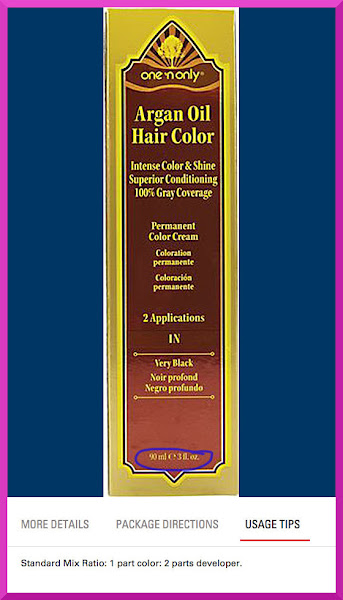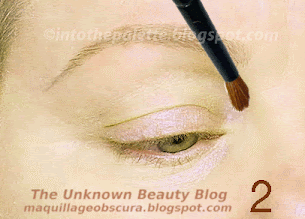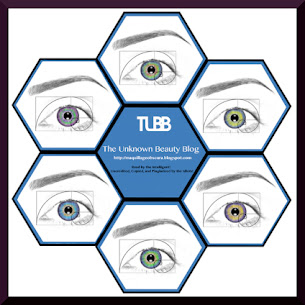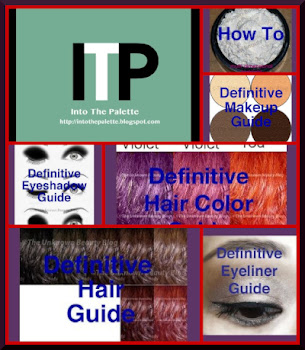I have a notebook on haircolor.. I have one because I don't want to go through the mistakes I went through in my youth. My hair never melted or anything, but I did have to cut it to an inch in length. That made me realize, I never ever wanted to damage my hair that bad again. I had to understand hair color!
Many of you will have this itch to experiment, or you will think in terms of more may work faster or make hair lighter. Let's remember, hair color is a chemical reaction. The logic behind hair color lies with the pigments and the VOLUME or the PERCENTAGE of peroxide in the developer.
Here is an email I received from a reader:
Hello, I was reading your article on the developer ratios and volumes.
I usually color my hair red, I use a 20 vol developer, but when I first color my hair, it comes out a very dark red, and then fades to a darker, strawberry blonde, which is the shade of the color I am purchasing. I generally use a 20 vol developer at 1:2 ratio - my question is, should I be using a 30 vol developer? and what ratio? Or is there such a thing as using 1:3 ratio? If I switch to the from 20 Vol 1:2, and start using the 30 Vol, will 1:1 give me lighter results than what I'm getting? I hope that makes sense!
Thank you,
Sara
To answer your questions Sara, let me break everything down.
"I usually color my hair red, I use a 20 vol developer, but when I first color my hair, it comes out a very dark red, and then fades to a darker, strawberry blonde, which is the shade of the color I am purchasing."
All hair color formulas will be darker when hair is freshly colored. What isn't penetrated into the hair shaft will wash out, thus the fading.
"I generally use a 20 vol developer at 1:2 ratio - my question is, should I be using a 30 vol developer? and what ratio?"
Did the instructions say to use a ratio of 1 part haircolor to 2 parts developer?
There are brands which require a ratio of 1:2. These are easily distinguishable by either the instruction OR the amount of product. The brand Wella generally uses a 1:2 ratio. You can see this is written on the box of the tube colors.
When it comes to their liquid color, it isn't readily seen. But, you can tell by the amount in the bottle.
Notice the fluid ounce is only 1.4 oz. This is less than the full 2 oz of a normal hair color. This means you will need double the amount of developer. Usually if not stated, if any brand gives you less than 2 oz for a full application, then you need double the amount of developer. In this case you will be using 3 oz developer.
Another example would be the brand One 'n Only.
Notice the ratio of 1:2. Why? If you look closely at the fluid ounces, there is 3 oz. for two applications which means 1.5 oz. for one application. This doesn't reach the full 2 oz for a 1:1 ratio, therefore, you need twice as much developer -- 1:2.
Other brands like Clairol have the usual 2 oz. of hair color. This means a 1:1 ratio of hair color to developer.
Then, there is the Zotos Age Beautiful color.
Notice the amount is 2 oz. This means 1:1 ratio. Then, if you read the instructions, it says 1:2 with 40 volume if you are using high lift blondes. Yes, only if you are using high lift blondes because the peroxide with double the amount and 40 volume will lift the hair and give it the blonde finish. Why would the instructions say this? The pigments in this level are catered to what is left in the hair.
This means anyone going this blonde has already eliminated the reds and possibly the orange pigments. Double the amount of 40 volume will lift the hair to a maximum level and the pigment left in the tube will just deposit the needed blonde pigments. This double amount of developer at this peroxide volume should only be done on hair that has eliminated the majority of warmth (red and red/orange pigments) from the hair.
Okay, going back to the rest of Sara's questions.
"...my question is, should I be using a 30 vol developer? and what ratio? Or is there such a thing as using 1:3 ratio? If I switch to the from 20 Vol 1:2, and start using the 30 Vol, will 1:1 give me lighter results than what I'm getting? I hope that makes sense!"
Sara, there is one thing I don't know and that is what level your NATURAL haircolor is or was. But, since you want something lighter than what you have; you should be using a higher volume of peroxide (developer) which would be 30 volume.
20 volume only lifts one level; 30 volume will lift two levels.
If the instructions stated a 1:2 ratio of haircolor to developer then use that ratio but if it didn't or if the amount is a full 2 oz, then it is only a ratio of 1:1.
As for the other ratios of 1:3, don't even put that into your head! If you want lighter, it is the volume or strength (20, 30, 40) of the developer you have to change and not the ratio of it!! More developer does not mean more lifting action.
The strength of the developer determines how much it can lighten your hair, not the amount!!!
Thank you Sara for your legitimate questions. I am sure you have asked what many have been thinking.
The Unwritten Rules
If you buy a tube of color from the beauty supply stores, the ratio of color to developer is usually written. If not, use the rules of the fluid ounces I stated above.
However, if you are unhappy with the 1:2 ratio and find the color just less saturated than what you expected (for example coverage of grays); then you are allowed to do the 1:1 ratio. You can just use one part color to one part developer instead of 2 parts.
The basic rule is -- you can lessen the amount of developer, just don't use more than what the instructions tell you.
The Formulas and Brands
I know many of you are tempted by mixing the tubes of leftover color you have at home.
FIRST, if you have half-empty bottles of hair color which are over 48hours old; THROW THEM OUT!
They have oxidized and will not color or if you do use them, you might end up with a darker color. This is why I like tubes, because you can use just anything from a 1/4 oz to the full amount. Just roll up the end to get rid of the air.
Only mix permanent colors with permanent, or demi with demi. Do it with the same brand. Why? Brands differ in their formulation, some may have ammonia or an ammonia substitute (for permanent color). Also, every brand has their signature undertone of color. I won't go into this but every line has the constant color which all colors are born from to make the line consistent.
One other important item. You need to buy a color wheel! This is one of the most important tools for ANYONE who colors their hair. It is also an important tool for anyone who likes makeup or even is a pro in the field. This wheel will come in handy when questions arise on how to neutralize color or enhance it.
I know this post got kind of long but I figured I should answer Sara's question thoroughly as possible. After all, we all will color our hair at home!
Olivia



















